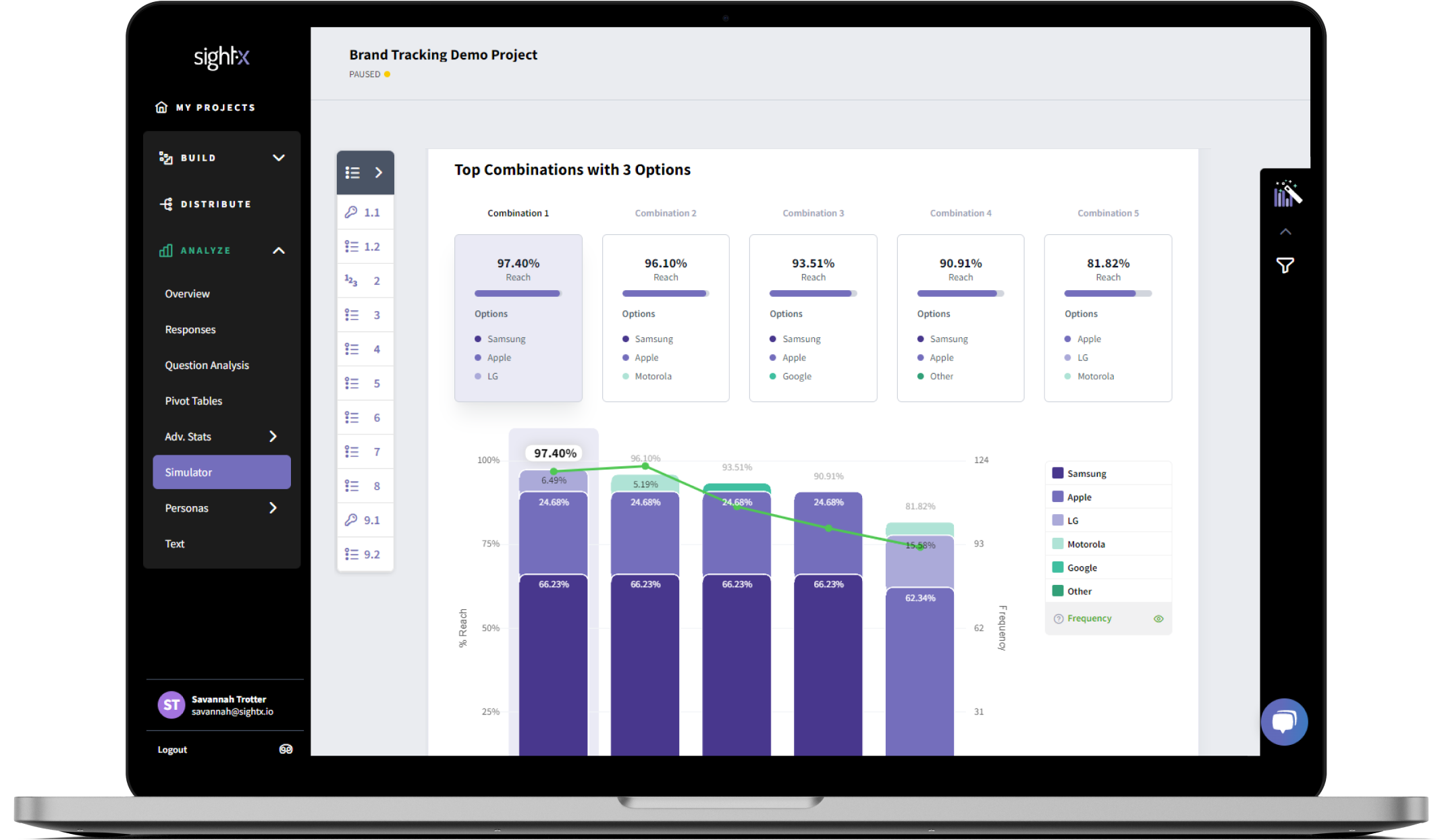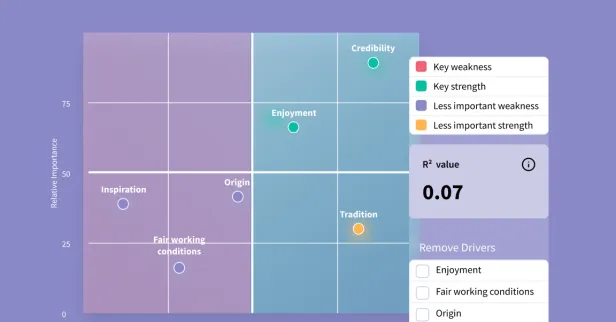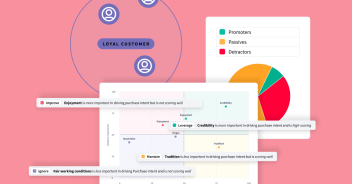Brand perception is the sum of how people see, feel, and talk about your brand, shaped by every interaction, from your marketing and customer service to what’s said about you online.
And in 2025, perception is more dynamic than ever. With social media virality, generative AI, and review platforms amplifying opinions in real time, a single moment can strengthen (or damage) a brand’s reputation overnight.
That’s why understanding how your brand is perceived isn’t optional — it’s a business-critical metric that drives growth, loyalty, and competitive advantage.
In this guide, we’ll explore what brand perception really means, why it matters, and the most effective methods and tools to measure it today.
What is Brand Perception?
Brand perception refers to consumers' collective image and associations with your brand. It encompasses their beliefs, feelings, and judgments formed through interactions, experiences, and external influences like advertising, word-of-mouth, and media coverage. Unlike awareness — which is about whether people know your brand exists — perception is about the quality of the associations and feelings they hold.
Why Brand Perception Matters
Drives Purchasing Decisions
A positive perception builds trust, loyalty, and advocacy. Consumers are more likely to choose — and stick with — a brand they believe in, even at a premium price.
Defines Competitive Positioning
Perception determines how you’re stacked against rivals. A strong brand image can secure market share, differentiate you in crowded categories, and make you a leader in your space.
Impacts Brand Equity
Stronger perception means stronger equity. This translates into pricing power, resilience during crises, and a loyal base of customers who view your brand as irreplaceable.
Shapes Employer & Investor Confidence
It’s not just customers who care. Positive perception also attracts top talent, builds partner trust, and strengthens investor confidence.
Guides Marketing & Growth Strategies
Perception insights help refine messaging, creative, and campaigns — ensuring your brand voice stays aligned with what customers value most.
Reduces Risk in a Fast-Moving World
In the age of viral news and AI-powered misinformation, monitoring perception lets you act quickly to prevent small issues from becoming reputational crises.
Builds Lasting Relationships
Strong brand perception fosters emotional connections that go beyond transactions — creating long-term loyalty and advocacy.
Ways to Measure Brand Perception
Measuring brand perception requires a mix of quantitative and qualitative methods. Each approach offers unique insights — from structured survey data to real-time social chatter. Here are the most effective ways to capture how your brand is truly seen today:
1. Surveys
Surveys remain one of the most reliable ways to measure brand perception. They let you directly ask customers and target audiences about their feelings, associations, and experiences.
Advantages:
- Reach large, diverse audiences quickly
- Provide quantifiable data for trend analysis
- Flexible design — mix closed- and open-ended questions
Sample Questions:
- “How would you describe our brand in three words?”
- “On a scale of 1–10, how likely are you to recommend us to a friend?”
- “What emotions come to mind when you think of our brand?”
2. Brand Trackers
Brand trackers continuously monitor key metrics like awareness, sentiment, and Net Promoter Score (NPS). They’re ideal for spotting perception shifts over time and measuring the impact of campaigns.
Advantages:
- Longitudinal view of brand health
- Detect subtle changes in consumer attitudes
- Tie marketing investments directly to perception outcomes
Key Metrics to Track:
- Brand Awareness (unaided and aided)
- Brand Sentiment (positive, neutral, negative)
- NPS (likelihood to recommend)
3. Focus Groups
Focus groups dig deeper into perceptions through guided discussions. They’re useful for uncovering the why behind consumer attitudes.
Advantages:
- Rich, qualitative insights beyond surface-level data
- Explore complex issues in detail
- Real-time probing and clarification
Sample Prompts:
- “What comes to mind when you think of our brand?”
- “How does our brand compare to competitors?”
- “What would you change to improve your experience?”
4. Social Listening & Monitoring
Consumers often reveal their rawest perceptions online. Tracking mentions, conversations, and sentiment across social media, forums, and review sites gives you a real-time window into brand reputation.
Advantages:
- Real-time, unfiltered feedback
- Identify potential issues before they escalate
- Spot opportunities for engagement and advocacy
Key Metrics:
- Volume of Mentions (how often your brand is discussed)
- Sentiment Analysis (positive vs. negative tone)
- Engagement (shares, comments, reactions)
5. Review Mining & Feedback Analysis (New in 2025)
Beyond surveys and social, customers leave a trail of perceptions in reviews — from Amazon and app stores to Glassdoor and G2. Mining these reviews surfaces patterns about strengths, weaknesses, and trust drivers.
Advantages:
- Uncovers unsolicited, honest consumer perspectives
- Pinpoints recurring themes in product/service feedback
- Complements structured survey data
6. Brand Communities & Direct Engagement (Emerging)
Many brands are now building communities — online spaces where customers, employees, or fans interact. These communities act as living focus groups, offering ongoing insight into how people perceive and connect with your brand.
Advantages:
- Continuous stream of qualitative and quantitative feedback
- Builds deeper brand-customer relationships
- Ideal for testing new ideas and messaging
Together, these methods form a holistic picture of brand perception. Surveys and trackers provide structured, measurable data, while focus groups, social listening, reviews, and communities add context and nuance. The most effective strategy blends several of these approaches for both breadth and depth.
Tools to Measure & Track Brand Perception
To effectively measure brand perception, you’ll likely need a combination of tools — from structured research platforms to real-time monitoring solutions. Together, they provide both the data and context needed to understand how your brand is viewed today.
SightX
SightX is a comprehensive platform that leverages AI and advanced analytics for market research and brand perception measurement. It offers tools for survey creation, data analysis, and sentiment analysis, providing deep insights into consumer attitudes.
Key Features:
- Customizable Survey & Brand Tracking Tools: Create tailored surveys and brand trackers that gather both qualitative and quantitative data.
- AI-Driven Analytics: Uncover deeper insights and trends in consumer data using AI-powered analysis.
- Sentiment Analysis: Analyze open-ended responses to gauge the emotional tone and sentiment behind consumer feedback.
- Comprehensive Reporting: Generate detailed reports and visualizations to present findings clearly and effectively.
By combining real-time monitoring tools (social, reviews, media) with structured research from SightX, brands can achieve a 360° view of perception — and proactively shape the narrative.

Social Listening Tools
Social media is often where perceptions form first. Listening tools monitor conversations, mentions, and sentiment across platforms to give you a real-time snapshot of public opinion.
- Brandwatch → Tracks social and online conversations at scale.
- Sprout Social → Combines monitoring with engagement and reporting features.
Review & Feedback Analysis Tools
Customer reviews and ratings capture raw, unfiltered perceptions. Mining these insights helps reveal recurring themes about trust, product quality, and customer experience.
- Yext → Aggregates and manages reviews across platforms.
- MonkeyLearn → Uses machine learning to detect sentiment and categorize feedback.
Media Monitoring Tools
Beyond social and reviews, media coverage can heavily influence brand perception. Monitoring platforms scan news outlets, blogs, and press mentions to capture how your brand is positioned publicly.
- Meltwater → Tracks brand mentions in news and online media.
- Cision → Provides monitoring alongside PR and communications tools.
Brand Perception Survey Questions to Use
To measure brand perception effectively, you’ll need the right questions. While there are many approaches, here are a few examples that cover the key dimensions of perception:
On Brand Awareness
- How familiar are you with our brand?
- Where have you heard about our brand before?
On Brand Sentiment
- What is your overall opinion of our brand?
- How would you describe your feelings toward our brand?
On Brand Attributes
- Which of the following words best describe our brand?
- How would you rate our brand on reliability, innovation, and customer service?
These sample questions can help you get started. Looking for more, checkout related content below.
How to Measure Brand Perception with SightX
With SightX, you can go beyond individual surveys and build a continuous picture of how your brand is perceived. Here’s how:
AI-powered survey creation
Quickly build and customize surveys with the help of generative AI, tailoring them to capture awareness, sentiment, and attributes.
Always-on brand tracking
Set up ongoing trackers to monitor brand KPIs over time. Spot shifts in perception early and adapt before issues grow.
Unified data + analytics
Collect responses, analyze trends, and uncover insights all in one platform. No more switching tools or chasing spreadsheets.
Streamlined reporting
Turn data into clear reports and visualizations that are easy to share across your team and leadership.
Want to see it in action? Request a demo and discover how SightX can help you measure and strengthen brand perception.
Brand Perception FAQs
What is brand perception in simple terms?
Brand perception is how customers and the market view your brand — based on experiences, reputation, marketing, and word-of-mouth.
Why is measuring brand perception important?
Because it directly impacts customer trust, loyalty, and willingness to choose you over competitors. Without tracking it, you may miss warning signs or opportunities for growth.
What are common methods for measuring brand perception?
Surveys, social listening, customer reviews, focus groups, and brand tracking studies are among the most effective.
How often should you measure brand perception?
At minimum, once or twice a year. Many brands with frequent launches or campaigns check quarterly to track shifts.
What’s the difference between brand perception and brand awareness?
Awareness is about whether people know you exist; perception is about how they feel about you once they know you.
Can negative brand perception be improved?
Yes. Through consistent messaging, customer experience improvements, reputation management, and engaging authentically with your audience.


